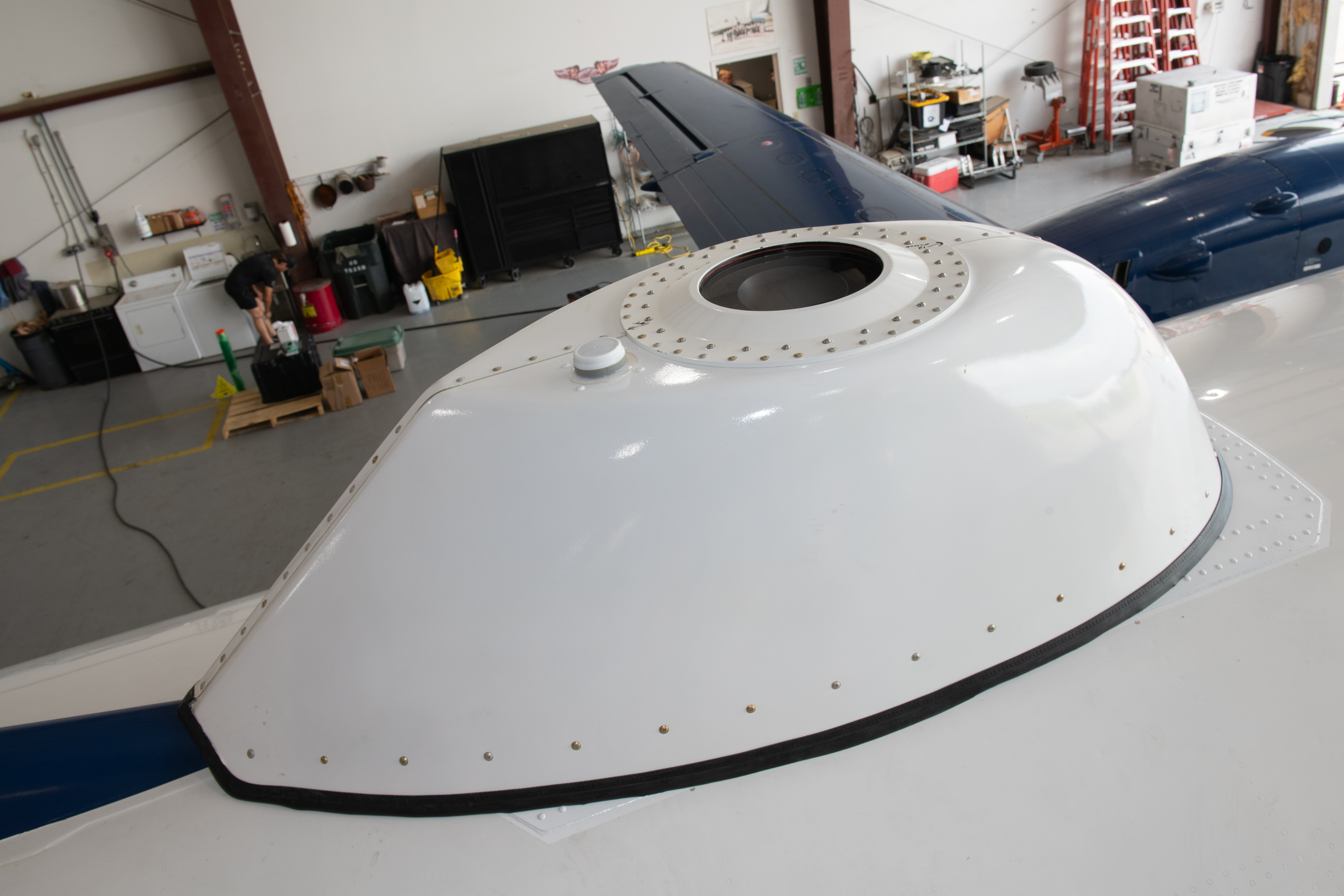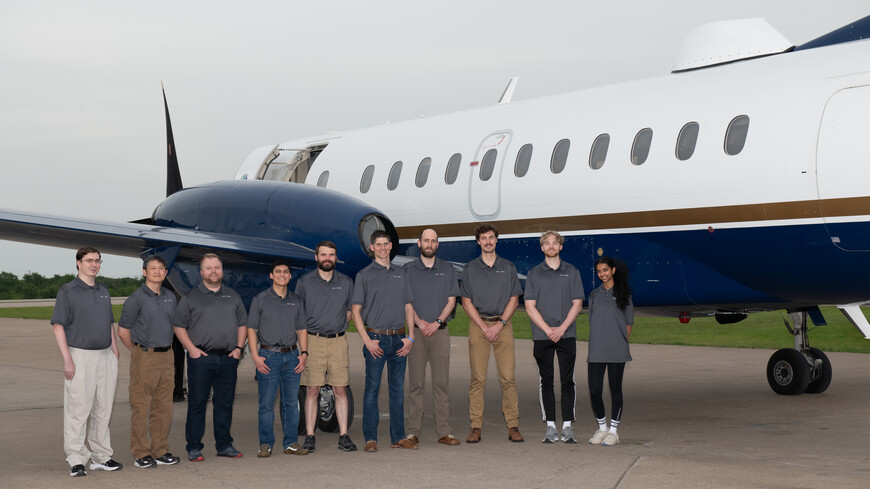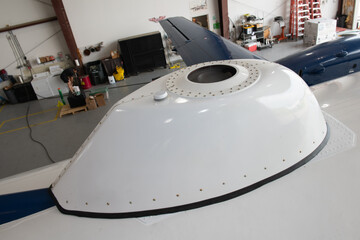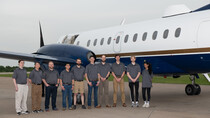Draper Completes Pre-Production Testing of Its Celestial Navigation System for Aircraft
CAMBRIDGE, Mass. – Draper recently executed highly successful tests of its Assured Positioning, Navigation, and Timing (APNT) capabilities including an advanced airborne celestial navigation system (CNS). The tests were conducted on a twin turboprop aircraft for more than 30 flight hours in day and night conditions at altitudes up to 25,000 feet mean sea level (MSL).
“The test results show that a producible airborne CNS can meet operational requirements and is ready for integration into customer platforms,” said Scott Dellicker, Director GN&C Solutions, Draper. “This is an important development for our customers’ ability to maintain freedom of maneuver in highly contested and challenging environments.”
The flight test demonstrated Draper’s current generation airborne CNS, a 1.5 cubic foot line replaceable unit (LRU) that has been qualified to MIL-STD-810 and MIL-STD-461 environments. The sensor system operated in an unconditioned, unpressured installation with preliminary results showing navigation accuracy better than 30 meters.
This CNS product utilizes Draper’s Skymark technology – an advanced form of celestial navigation aiding for GPS-denied and degraded environments. Skymark technology has been in active development for more than a decade and has matured into a family of products for surface vessels, aircraft, and missile applications. This technology can be adapted readily to ground and space vehicles as well.
The surface vessel variant is in active production in Draper’s Cambridge CNS production facility for deployment on Arleigh Burke-class destroyers. The aircraft variant demonstrated in the recent flight test is on track for deliveries starting in late 2026 (GFY27).
In addition to the CNS, the test flights included several other components of Draper’s Anytime, Anywhere, Any-threat Position Navigation and Timing (A3PNT) product portfolio. These additional modalities are complementary to one another and when deployed together will expand the operational capability of host platforms to mitigate a variety of PNT threats.
Vision-Aided Nav
Draper’s vision-aided navigation (VAN) product utilizes both visible and IR wavelength imagery to provide robust GPS-denied navigation capabilities at all times of day. It has been fielded on various platforms and successfully supported military operations in contested environments, from altitudes ranging from 100m to 100km. Recent tests of the Draper Multi-Environment Navigator (DMEN) for lunar landings are described here. This series of flight tests provided the opportunity to demonstrate VAN under challenging visual conditions, such as high-altitude nighttime flight and flight over water.
Signals of Opportunity
The Signals of Opportunity (SOOP) product uses a Ku band Low Noise Block down-converter plus Feedhorn (LNBF) to collect radio frequency (RF) signals in the 10.7-12.7 frequency range. These signals are transmitted from low earth orbit (LEO) satellite internet constellations. The platform agnostic system can be adapted to other frequency bands, and is designed to meet low size, weight and power (SWaP) integration requirements. This flight test event was a key step in validating Draper’s current design solution for a LEO Doppler-based navigation capability using SOOP signals.
The recent flight test campaign further demonstrated Draper’s commitment to advancing A3PNT solutions to provide users freedom of maneuver in highly contested and challenging environments. In addition to vision-based, celestial, and RF-based navigation, Draper is working on other A3PNT solutions such as magnetic navigation, high-precision clocks, advanced inertial measurement instruments, and integration of GPS with inertial sensors.
“This internally funded test flight demonstrates our commitment to producing alternatives to GPS in highly contested and challenging environments,” said Chris McDowell, Director for Assured PNT Solutions at Draper. “As related technologies continue to mature our portfolio of A3PNT options will expand further, lessening our dependence on GPS and enabling operations across multiple domains and platforms.”
About Draper
Draper is a non-profit research, development, and manufacturing company that solves some of the nation’s most important challenges. With more than 2,000 employees working in collaboration across 12 locations, Draper delivers transformative, mission-driven solutions that successfully meet our customers’ requirements. These efforts focus on four critical mission areas: Strategic Systems, Space Systems, Electronic Systems, and Biotechnology Systems. To extend our legacy into the future, the Draper Scholars program engages with the next generation of innovators while DraperSPARX™ seeks to partner with startups and small businesses that can further our mission. To learn more about Draper, visit www.draper.com.
Released June 4, 2025




